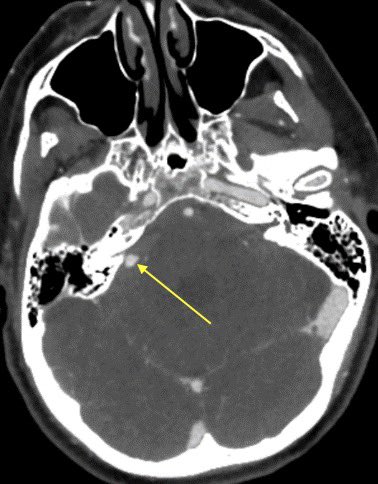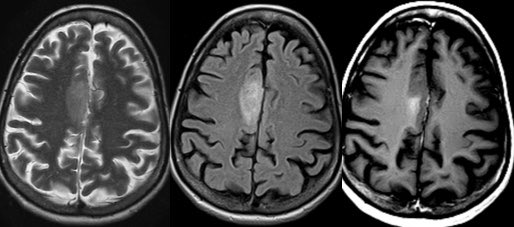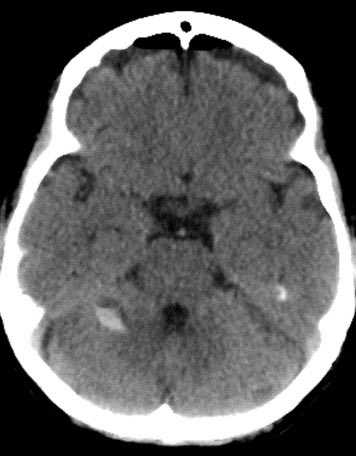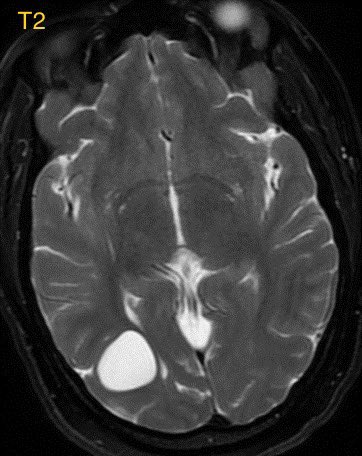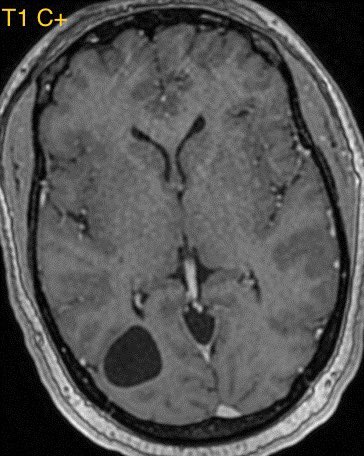
What is the most likely diagnosis in this adolescent with seizure? 🧠
(Sorry I have no CT without)
#neurotwitter #peds #Neurosurgery #Neurology @The_ASPNR @TheASNR #MedTwitter


(Sorry I have no CT without)
#neurotwitter #peds #Neurosurgery #Neurology @The_ASPNR @TheASNR #MedTwitter



What is the most likely diagnosis?
Answer: Confirmed supratentorial ependymoma
Predicting tumors is incredibly challenging in the absence of specific features …some learning points on the case in 🧵
Predicting tumors is incredibly challenging in the absence of specific features …some learning points on the case in 🧵
▶️Typically, we think of the ependymoma arising from the 4th ventricle with the “plastic” or “toothpaste” spread through the ventricular foramen
▶️About 1/3 of ependymomas occur in the supratenorium due to fetal rests of ependymal cells within the periventricular parenchyma
▶️About 1/3 of ependymomas occur in the supratenorium due to fetal rests of ependymal cells within the periventricular parenchyma
▶️when located in the supratentorium, the parenchyma (particular the frontal>parietal lobes) is actually more common than intraventricular
Imaging: morphology is lobulated MIXED cystic and solid with MINIMAL surrounding edema
Imaging: morphology is lobulated MIXED cystic and solid with MINIMAL surrounding edema
Imaging:
T1: iso-hypo (solid components)
T2: variable
DWI: solid components classically restrict (not seen in this case) …the restriction can make them indistinguishable from embryonal tumors
T1C+: usually intense heterogeneous enhancement
May also have hemorrhage and/or calcs!
T1: iso-hypo (solid components)
T2: variable
DWI: solid components classically restrict (not seen in this case) …the restriction can make them indistinguishable from embryonal tumors
T1C+: usually intense heterogeneous enhancement
May also have hemorrhage and/or calcs!
Ddx: many
▶️Glioblastoma -> less common in children and would expect a more infiltrating pattern with high surrounding T2 signal from tumor spread and edema
▶️Glioblastoma -> less common in children and would expect a more infiltrating pattern with high surrounding T2 signal from tumor spread and edema
▶️Embronal tumor can be indistinguishable though the absence of diffusion restriction makes this less likely (if present, ependymoma typically cannot be reliably differentiated)
▶️pilocytic Ast-> when supratentorial, usually located in hypothalamus (hemispheric rare in kids)
▶️pilocytic Ast-> when supratentorial, usually located in hypothalamus (hemispheric rare in kids)
• • •
Missing some Tweet in this thread? You can try to
force a refresh
 Read on Twitter
Read on Twitter






